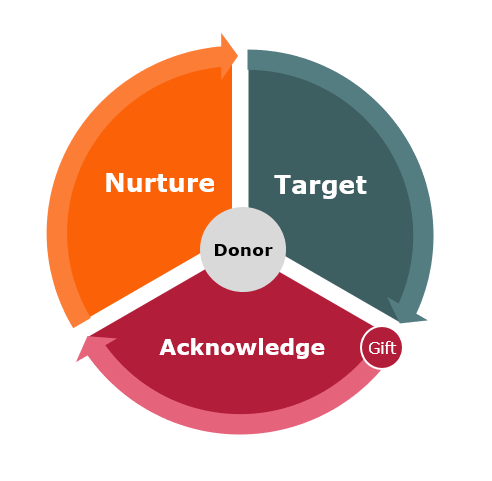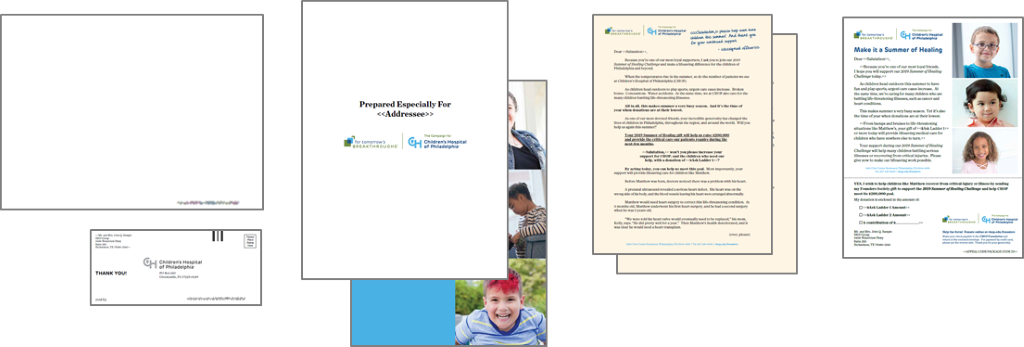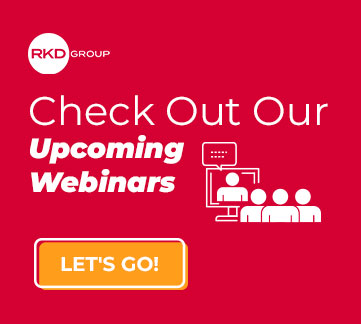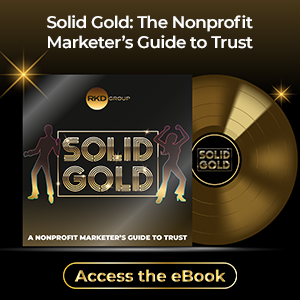You may be hesitant to admit it, but you know the truth: The world of charitable giving has been changing right in front of you. And you may not realize it yet, but nonprofit organizations need mid-level donors now more than ever.
The developments have been small and subtle, so each one has passed by virtually unnoticed – a tiny crack in the dam holding the nonprofit community together. But when you step back and look at the big picture, you can see the flood that is permanently altering the landscape of fundraising.
Read on to find out more about these changes and how they affect nonprofit fundraising. We’ll also discuss why this makes mid-level donors so crucial to your future as well as how you can structure a successful mid-level program.
BIG CHANGES ACROSS THE NONPROFIT WORLD
Researchers at the Indiana University Lilly Family School of Philanthropy recently provided a broad view of fundraising in the U.S. with their detailed report “Changes to the Giving Landscape.”
The study noted that from 2000 to 2016, the number of households across America that donated to charity declined by a whopping 13 percent. That’s 20 million families who are no longer contributing money to nonprofit organizations.
There are quite a few reasons this tidal shift is occurring, as we’ve detailed previously, but the effects of the change are leaving an impact on nonprofits big and small.
Add to this the ever-growing number of nonprofits nationwide – we’re up to 1.8 million now – and that’s a lot of competition for the attention of donors. This puts a significant strain on donor acquisition. After all, how do you stand out in this huge crowd of nonprofits all trying to get noticed?
We meet so many development directors who approach us with a declining donor database and inconsistent results from acquisition efforts. To be clear, we strongly recommend continuing investment in acquisition – because we’ve seen what happens when you don’t, yikes! – but we also see opportunity for a new focus.
THE AGE OF THE MID-LEVEL DONOR
Mid-level program development is one of the most important fundraising trends facing nonprofits. So much so, in fact, that we think beyond ”mid-level” and refer to these donors as exceptional donors.
For years, this group of donors has been the forgotten middle child, but overlooking them is a mistake you simply can’t afford.
Mid-level donors make up roughly 1 percent of the donor file for most nonprofit organizations, but they usually account for 30-35 percent of revenue. These donors are also the primary source for major gifts and planned giving.
With the challenges of today’s fundraising climate, this is the perfect place to shift some of your attention. One $2,000 donor equates to 40 direct response donors who give $50 each. The key here is quality over quantity.
That said, you can’t simply treat mid-level donors the same way you treat your mass-market direct response donors. Mid-level donors want and need more attention and nurturing, yet you don’t have the resources to treat them like you treat your major donors.
So, what should you do?
Mid-level donors require a different form of communication, called humanized personalization. It requires a balanced approach that fits the needs and budget of your organization while treating these important donors the way they deserve to be treated.
THE STANDARD APPROACH TO MID-LEVEL
Many organizations stop short on their mid-level programs, merely providing direct response tactics to a segment of higher-level donors. Those who do have a mid-level strategy typically design a linear program that misses the mark when it comes to stewarding this important segment of donors.
It looks a little something like this:

We also realize that nonprofit organizations face internal challenges when it comes to mid-level programs, including:
- Limited resources
- Not enough personalization
- Insufficient data-based targeting
- Lack of a decision-making model
These internal challenges combined with a linear approach results in low retention and a weak mid-level donor program.
If this sounds familiar, you’re missing out on some serious donor revenue. You simply can’t afford to get this wrong.
A DONOR-CENTRIC VISION
You need to build a donor-centric program that connects people’s passion with your shared purpose. Understand the power of upward migration and develop direct marketing approaches that cultivate prospects to develop deeper relationships with the organization.
You should be relationship-focused and build donor journeys that offer meaningful experiences to demonstrate the impact of your exceptional donors. Invite them to a special event, offer them a tour of your facilities, suggest volunteer opportunities, and more.
Mid-level donors consider themselves close friends of your organization because they have made a choice to have a philanthropic relationship with you. They deserve to be treated in a way that reflects how they see themselves within your mission.
That’s why we suggest a circular, lifecycle approach to these exceptional donors. And, as you can see in the graphic below, the donors remain at the center of it all.

Target: Mid-level prospects should be identified based off enhanced data analysis and donor modeling. Once targeted, communication should be structured to invite these prospects to make a bigger impact on the organization.
Acknowledge: After the gift, the first 30 days are crucial in beginning a meaningful relationship with exceptional donors. They must be acknowledged within 48 hours. Communication and touchpoints that follow must leave the donor feeling valued and special.
Nurture: The relationship continues with personalized engagement and high-end touchpoints that enhance the direct response communication they continue to receive. This translates into fewer asks and more stories that illustrate the impact of the gift.
Once this cycle is complete – and we recommend about 24 months for the length – you can evaluate the donors to determine if they belong in the major donor program or should move back into the mass donor program. The cycle then begins once again.
TACKLING INTERNAL CHALLENGES
When it comes to scaling the right-sized program for your organization, we recommend looking at the following areas:
Insights: Analyze both your program history and your donor history. From there, you can create data-based program recommendations and mid-level donor modeling.
Organization structure: Evaluate the resources you have available and consult with your leadership. Determine how best to build (or rebuild) your mid-level program in a way that fits your organization’s unique needs.
Project implementation: With the plan in place, execute communication strategies aimed specifically toward exceptional donors. Make sure to align your donor-centric communication across digital and direct mail.
Execution coaching: Don’t stop once the program starts. Consistently evaluate the program’s results and optimize where needed. Provide training and counsel for frontline fundraisers to ensure a consistent donor experience.
If you want to drive growth in your mid-level program, your plan will need to be comprehensive and integrated, including direct mail, email, social media, personal calls, face-to-face, high-touch strategies, events, invitations and more. The essential elements of a donor-centric, mid-level program are understanding the donor’s point of view, communicating their impact and executing consistently.
The result is growth in mid-level and major gifts through acquisition, upgrades and retention.
HOW IT WORKS
When Lurie Children’s Hospital wanted to upgrade donors from their annual giving to their mid-level program, RKD helped develop a custom approach designed to inspire higher-level giving from both current and prospective mid-level donors.
The result was a 104% increase in net revenue for the program.
When Children’s Hospital of Philadelphia had a hunch that they could improve connection with mid-level donors in the New York area, RKD worked with them to develop a high-touch package designed to create an elevated donor experience, including multiple personalized elements and rich imagery to connect patient stories and potential outcomes. The package was segmented to high-wealth areas.
The high-touch approach delivered by boosting mid-level revenue. The hospital even acquired two major donors in the campaign, with each making contributions north of $50,000.

So whether it’s a stewardship campaign, integrated video or direct mail, the point is that it takes an intentional effort to make it work.
Mid-level donors want to be a part of your mission. They want to feel included. They want to feel wanted. They want to feel like superheroes.
Now that you know how important this group of donors is to your fundraising future, these feelings should flow both ways.
If you'd like to learn more about how you can execute strategies to connect with mid-level donors, contact us today.





Leave a comment: